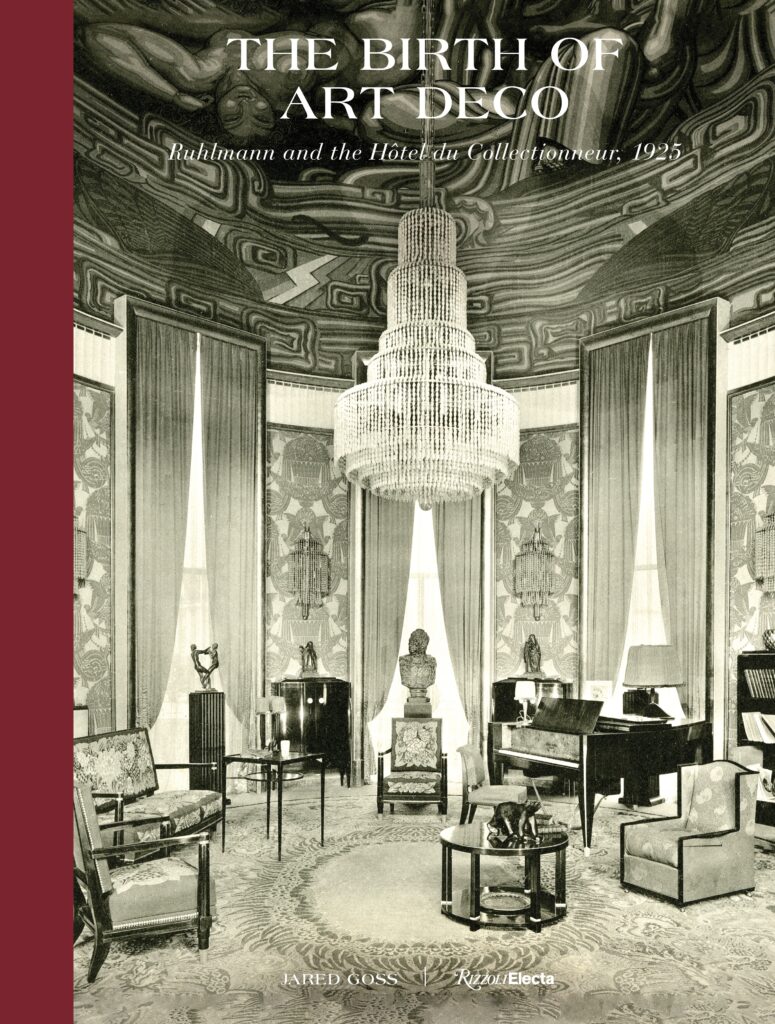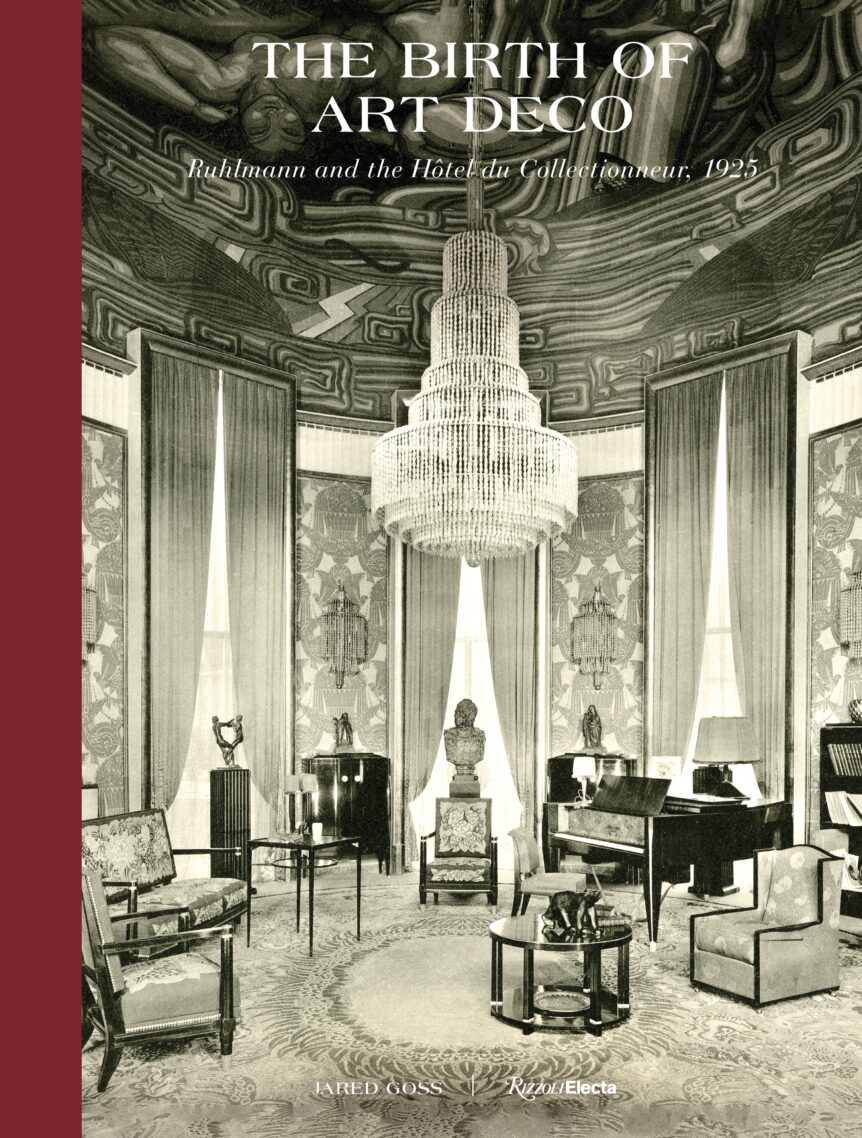At the hundredth anniversary of the Exposition Internationale des Arts Décoratifs et Industriels Modernes, Jared Goss notes in his introduction to The Birth of Art Deco: Ruhlmann and the Hôtel du Collectionneur, 1925 (Rizzoli) that art deco objects have “officially become antiques.” In this new monograph, Goss contextualizes Émile-Jacques Ruhlmann’s pavilion at the exhibition, the Hôtel du Collectionneur, within the emerging art deco movement.
Esteemed in his time, Ruhlmann was not only the leading French designer of objects in the style, but also an ensemblier, both designing and curating interiors. TheHôtel du Collectionneur represented the zenith of his work in the deco style. According to the author, “[Ruhlmann] was the preeminent French designer of his era and his work continues to define oneof the fundamental principles of art deco: that one must learn from the past in order to be modern.”

The pavilion was designed with the architect Pierre Patout and filled with furniture, textiles, and objets d’art, both by Ruhlmann himself and assembled in association with more than forty different designers, artists, and craftsmen. The Birth of Art Deco reproduces a facsimile of the extensive catalogue published in conjunction with the pavilion by Éditions Albert Lévy in 1926, itself an antique.
However, the facsimile does not appear until the second half of the book. Goss spends the first half providing a history of art deco, the 1925 exhibition, and a biography of Ruhlmann for the uninitiated. Goss excels in creating a mise-en-scène through language and imagery, describing art deco through its objects: not “so much the flapper sitting in a café, enjoying a smoke and a drink while powdering her face; rather, it’s her Bakelite cigarette holder, her jeweled vanity case, the chrome shaker holding her cocktail.”
Beyond the images of objects, the book’s collection of drawings, design sketches, and historic photographs further richly illustrate the telling of deco’s opulent history. It is as much about Ruhlmann and his contributions to deco as it is a tribute to the style itself. But what makes this book relevant for 2025, apart from the value of the facsimile and bringing together such a wealth of images and research under one cover? Goss’s narrow focus on objects, maintaining that art deco is largely about the establishment of an aesthetic, creates a myopic view in this respect.
That said, he does touch on such important points as art deco’s connection to luxury commerce; the privileging of craftsmanship over inexpensive, mass-produced goods; the style’s tendency toward tradition; and the French government’s support for the exhibition to promote French goods, as opposed to those of the UK and Germany. All these point to a larger story about French art deco and the elite, ethno-nationalism, and the globalizing of commercial culture.
Although Goss calls his objects “antiques” at the centenary of the Exposition Internationale des Arts Décoratifs, the ideas they represent certainly are not.

